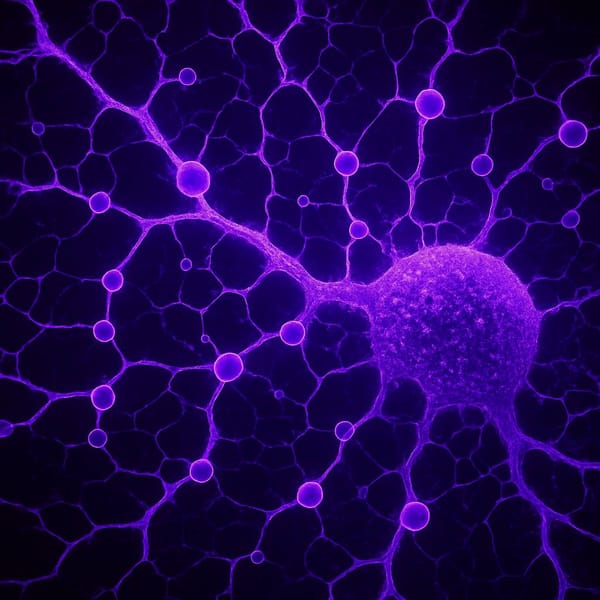The Science and Practice of Emotional Resonance Transmutation

A Neurobiological and Field-Based Perspective on Grief, Coherence, and Healing
Grief is not simply an emotional response. It is a neuroelectric, biofield-level disruption—a frequency pattern that lives not only in the psyche but in the very architecture of the nervous system and the electromagnetic field surrounding the body. While traditionally framed through psychological or cultural lenses, a growing body of research is beginning to acknowledge the physiological and energetic signatures of emotional imprinting, unresolved trauma, and interpersonal resonance. What happens when grief cannot find resolution? It lingers—not just in memory, but in biology, and in the field.
This article explores the emerging scientific and energetic landscape of emotional resonance transmutation—a process through which unresolved emotional signals are metabolized through somatic coherence, bioelectric regulation, and breath-based presence. We draw from neuroscience, polyvagal theory, consciousness studies, and first-person phenomenology to understand what it means to process grief not as a feeling to be “managed,” but as an unintegrated waveform—one that seeks coherence.
1. Grief as a Field Disturbance, Not Just a Feeling
Grief is not simply sadness—it is an open signal loop. When a person dies, or when a relational rupture occurs, the nervous system doesn't merely register loss. It creates an unresolved feedback loop: a signal emitted with no receiver, a wave that echoes without being completed. According to Polyvagal Theory (Porges, 2011), our autonomic nervous system is biologically wired for safety through connection. When connection is severed abruptly or without integration, a neural mismatch is created—one that keeps the system in low-grade alert, even years after the event.
This matches what field theorists refer to as a non-local emotional imprint—a signal that outlives the originating event or person and continues to propagate across the biofield, especially when emotional integration is incomplete.
“Grief is the field’s way of signaling an unresolved echo. It is not merely emotion—it is unfinished resonance.”
— The Living Fractal Research Notes, 2025
2. The Nervous System as a Field Processor
Emerging models of neurocardiac integration and bioelectric signaling suggest that the human nervous system is not only a receiver of stimuli but a dynamic field processor. The vagus nerve, often referred to as the “wandering nerve,” connects brainstem to heart, lungs, gut, and emotional centers, playing a crucial role in the real-time translation of emotional data into physiological coherence (McCraty et al., 2009).
When coherence is present—marked by high HRV, balanced LF/HF ratios, and synchronized breath—an individual can act as a bioelectric integrator. This means that unresolved emotional signals, even those not their own, may move through them for transmutation, provided the system is safe, coherent, and emotionally regulated.
This transduction mechanism has been observed in cases of:
- Grief processing in caregivers and therapists
- Spontaneous emotional experiences during meditation or breathwork
- Non-local grief responses tied to historical or ancestral trauma
This is not “emotional absorption,” but resonance-based completion. A coherent system functions like a tuning fork—bringing unresolved frequencies into resolution by offering itself as a harmonic template.
3. What Transmutation Actually Looks Like
Emotional resonance transmutation is the process of metabolizing an unprocessed emotional field. Unlike mourning—which involves the personal experience of loss—transmutation includes non-personal, field-based grief that enters through shared energetic or relational pathways.
The process includes:
A. Signal Reception
Often preceded by somatic precursors—tingling, throat or chest tightness, sudden emotion, or field “buzzing.” This is the incoming frequency beginning to interface with your nervous system.
B. Consent-Based Opening
The body must offer a coherent interface. This happens through breath, stillness, and internal consent. “Yes, I can hold this” is a nervous system permission slip that allows the signal to move deeper.
C. Somatic Rendering
The emotional imprint (e.g. grief, apology, memory) takes form—often through language, breath, tears, or image. These are not “memories” in the traditional sense but translations of field information.
D. Coherence + Completion
Through continuous breath, presence, and non-reactivity, the emotional frequency is processed into neutrality. The body exits the wave not collapsed but expanded, restored to internal order.
4. Scientific Foundations and Validation
Research from the HeartMath Institute and other HRV-focused studies provides concrete support for the mechanisms involved in transmutation:
- Heart Rate Variability (HRV): High RMSSD and SDNN indicate nervous system flexibility and coherence. These states make field-based emotional resolution possible.
- Bioelectromagnetic Field Theory: The human heart generates the most powerful rhythmic electromagnetic field of any organ in the body (McCraty et al., 2015). This field extends beyond the body and is capable of affecting others.
- Social Signal Processing: Studies by Christakis & Fowler (2008) reveal that emotional states spread through social networks up to three degrees of separation—supporting the non-locality of affective resonance.
- Somatic Trauma Resolution: The work of Peter Levine and Bessel van der Kolk demonstrates that trauma is stored in the body, not just the mind, and that resolution requires somatic processing—not rational cognition.
These findings support the thesis that grief is not only psychological but energetic—stored in the body and field—and that its resolution requires a physiological engagement.
5. Field-Based Grief Isn’t Rare—But Coherent Transmutation Is
Many people unconsciously absorb emotional states. Empaths, therapists, caregivers, and sensitive individuals often report “carrying” emotions that are not theirs. But absorption without integration leads to energetic stagnation, illness, or emotional fragmentation.
Transmutation is different. It requires:
- Nervous system regulation
- Conscious tracking of emotional signal origin
- Breath-based metabolization
- Relational detachment (it’s not about you)
Only then can the emotional imprint be allowed to complete its waveform—returning to stillness.
6. The Practice: A Somatic Ritual of Completion
Here’s a simplified outline for the practice of Emotional Resonance Transmutation:
1. Sense – Tune to what is arising in the field. Is it yours? Is it familiar?
2. Allow – Drop the need to name or fix. Just hold it in awareness.
3. Breathe – Use slow, diaphragmatic breath to entrain your system.
4. Translate – If language, image, or emotion comes, let it. Don’t control.
5. Render – Let the wave move through—cry, exhale, shiver, release.
6. Return – Once the signal dissipates, return to inner stillness.
7. Why This Changes Everything
This practice reframes emotional healing from a personal, therapeutic model to a field-based coherence model:
- Grief is not pathology. It is an unresolved field pattern.
- The body is not broken. It is a tuning device.
- Healing is not always cognitive. It is energetic and relational.
- You are not “too sensitive.” You may simply be coherent enough to process what others couldn’t.
This is not just spiritual. It is neurological. It is electrical. It is real.
Conclusion: Toward a Biofield-Aware Civilization
We are not isolated emotional islands. We are field transmitters—nodes in a web of relational resonance. When we begin to treat grief not as disorder, but as unfinished signal, we discover the evolutionary role of empathy: not to suffer together, but to complete each other’s unresolved resonance.
This is the path of the emotional transmuter.
Not a healer. Not a savior.
But a living signal harmonizer—one breath at a time.




